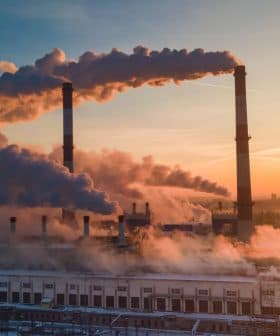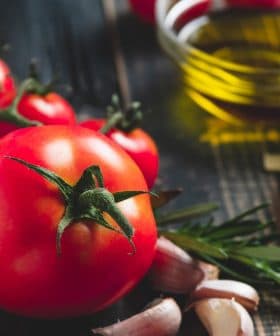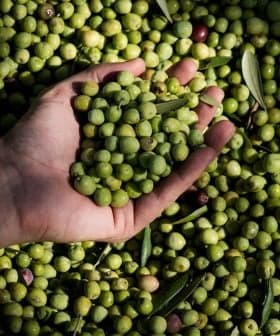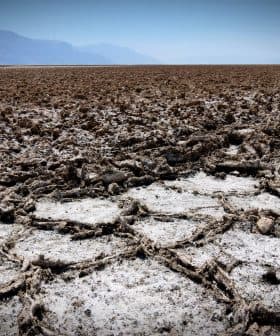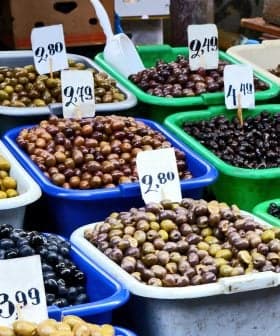How Air Pollution Affects Olive Oil Quality in California

The San Joaquin Valley in California has been struggling with air quality issues for the past 25 years, resulting in many counties failing EPA standards for smoke and ozone pollution. Efforts to improve air quality include transportation initiatives, zero carbon trucking, and reducing agricultural burning to protect the health of future generations.
The ongoing impact of climate change has left much of the western United States with air quality problems. According to a recent PBS report, the problem is rooted in California’s San Joaquin Valley.
The southern half of California’s Central Valley is the heart of agricultural production and distribution. For the last 25 years, the region has been out of compliance with Environmental Protection Agency standards.
See Also:California Olive Farmers Turn to Birds for Natural Pest ControlAccording to a report from KCRA, an NBC television affiliate in Sacramento, most Californians experience unhealthy levels of air pollution. The 2023 State of the Air Report confirmed that many California counties receive failing grades for smoke and ozone pollution.
Air quality improvements are underway, such as transportation initiatives, zero carbon trucking, reduction of agricultural burning and finding ways to limit the risk of large wildfires.
“The good news is we’ve seen some improvements in a lot of places across the valley,” Congressman Josh Harder, who represents communities in the San Joaquin Valley, told KCRA. “The bad news is we still have a lot of work left to go.”
Harder emphasized in the report that it is essential to focus on prevention, hire more firefighters and seek to protect the health of future generations by improving air quality – short and long-term.
Air pollution is compounded in California by smoke from wildfires. The California Department of Forestry and Fire Protection reported 5,474 wildfires burning 104,169 hectares in 2023.
Similar damage was reported in 2022. Contrast this with 2020, when more than 8,600 wildfires consumed 1.7 million hectares and killed 33 people.
According to CalMatters, a non-profit news organization, California wildfires emit as much carbon as almost 2 million cars. In an increasingly vicious cycle, climate change worsens fire, and fires worsen climate change.
CalMatters reported that in 2020, the state’s wildfires increased emissions by about 30 percent. Scientists from the University of California – Los Angeles describe the state’s efforts to achieve climate goals as going “up in smoke.”
According to a Baker Wine & Grape Analysis newsletter, there have been questions in recent years about smoke taint in olives and olive oil. “Thankfully, it seems as though olives fare much better than grapes in the presence of wildfire smoke,” the lab reported.
The newsletter cited Selina Wang, an associate professor at the University of California-Davis’ food science and technology department, saying that olives are less susceptible than winegrapes to smoke taint thanks to thicker olive skins.
“All crops, including olives, are vulnerable to smoke taint, depending on its maturity index and ripening stage, the distance between the orchard and active fire, how long the exposure to smoke continued before harvest, how close the fire to the harvest period and rain event,” Wang told Olive Oil Times.
“I am not aware of significant recent wildfire effects on olive growing and production,” she added.
The protective cuticular wax, the fact that ash is insoluble in oil, and the washing step in the milling minimize the opportunity for smoke to taint olives and olive oil.
“Most research on smoke taint has been done on wine grapes,” Wang said. “Olives are thicker and have more waxy skins than grapes, so olives have natural protections against smoke taint.”
“From an air quality standpoint, olive trees and olive farming create far less air pollution than farming the annual crops that are replanted and tilled up every year to go into refined seed oils,” Samantha Dorsey, president of McEvoy Ranch, told Olive Oil Times. “Because olive trees are permanent crops, they are significant carbon sinks as well.”
Dorsey described McEvoy Ranch’s experience during times of poor air quality.
“With many years of wildfire smoke pollution in California, we have had lots of opportunity to study our olives that have sat in smoke for weeks on end,” she said. “We have found zero traces of smoke taint or the smoke taint marker, guiacol, in any of our olives or extra virgin olive oil.”
“Olive oil is unique in that it does not absorb any of its aromatic or flavor compounds until it is milled, which leaves the oil inside the olive on the tree quite protected against wildfire smoke,“ Dorsey added.
Looking at the bigger picture of environmental impact, olive oil is superior to other edible oils.
“From a long-term sustainability standpoint (vis a vis air quality and many other environmental markers), olive oil is superior to any other edible oil on the market,” Dorsey said.
“Its production inputs are comparatively low, the trees themselves sequester carbon at a fantastic rate, it is a permanent crop that does not require replanting each year (unlike seed oils), it is shelf stable (unlike dairy), you can extract the oil physically instead of chemically, and it is incredibly healthy,” she added.



